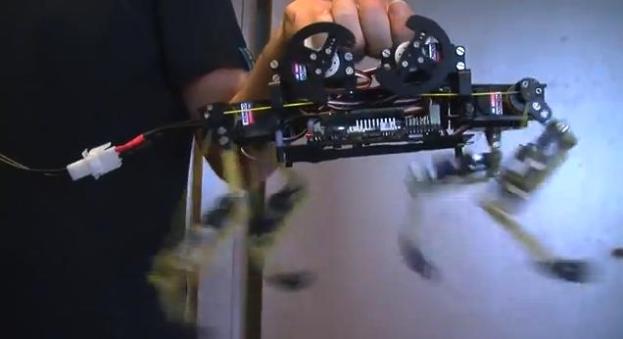 Though it lacks a head, fur, whiskers and a miaow-ing sound, the ‘cheetah-cub robot’, developed by researchers at the École Polytechnique Fédérale de Lausanne (EPFL) in Switzerland, has unmistakably been modeled on a cat. The name’s a bit of a giveaway, too.
Though it lacks a head, fur, whiskers and a miaow-ing sound, the ‘cheetah-cub robot’, developed by researchers at the École Polytechnique Fédérale de Lausanne (EPFL) in Switzerland, has unmistakably been modeled on a cat. The name’s a bit of a giveaway, too.
The aim of the ongoing project, which is being run by EPFL’s Biorobotics Laboratory (Biorob), is to build a robot which is small, light and fast, with researchers turning to the animal kingdom for inspiration.
The Biorob team hopes its work will encourage further research in the field of biomechanics. The technology, designed to give robots speed, agility and stability, could be used to build similar machines for search and rescue missions.
Speedy
“The sum of morphology and control enables us to run this robot very fast, up to 1.4 meters per second (3.1 mph), which is about seven body lengths per second,” Biorob’s Alexander Sproewitz said.
That’s pretty fast, though admittedly sounds rather sluggish when compared to the Usain Bolt of the robot world, the 29-mph Cheetah – another cat-inspired creation – built by Massachusetts-based robot specialist Boston Dynamics. Engineers working on the Cheetah believe it has the potential to reach speeds of 40 mph.

EPFL says its smaller creation is “based on the meticulous observation and faithful reproduction of the feline leg.” Each of the cheetah-cub robot’s legs is made up of three segments, with power generated by springs and actuators instead of muscles.
“This morphology gives the robot the mechanical properties from which cats benefit, that’s to say a marked running ability and elasticity in the right spots, to ensure stability,” Sproewitz explained. “The robot is thus naturally more autonomous.”
Biorob director Auke Ijspeert said the long-term goal of the cheetah-cub robot is “to develop fast, agile, ground-hugging machines for use in exploration, for example for search and rescue in natural disaster situations.”
You can check out its cat-like movement in the video below.
[via engadget]
Editors' Recommendations
- Finishing touch: How scientists are giving robots humanlike tactile senses
- Watch MIT’s Mini Cheetahs limber up for the robot apocalypse
- New flying fish-inspired robot uses explosive water farts for propulsion
- Scientists re-create marsquakes here on Earth using data from InSight lander
- Like the real thing, this robot ant colony is more than the sum of its parts


